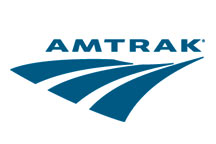Speaking of bad ideas, a recent Word on the Street article says that local officials are still pursuing the foolhardy idea of getting a commuter train to Bloomington instead of a direct Amtrak route to Chicago. Rather than re-explain in different words why this is such a bad idea, I’m just going to reprint an earlier article I wrote on the subject (original post here):
The old Peoria-to-Bloomington commuter train idea is apparently still on the table over at the Tri-County Regional Planning Commission. Let’s go over this again:
Nobody wants to take a train to Bloomington. The only reason anyone would ever take a train to Bloomington is to continue on to Chicago or St. Louis. And if their ultimate destination is elsewhere, they’ll just drive to Bloomington to catch the train. Bloomington has free parking and virtually no traffic congestion. So a Peoria-Bloomington route is doomed to fail.
Peoria to Chicago, on the other hand, would be a heavily-traveled route. Since Chicago would be the ultimate destination for most train trips anyway (they’re a major Amtrak hub, unlike St. Louis), it makes sense to have a direct route from Peoria. Those in the tri-county area could avoid the commute to Bloomington to catch the train, as well as avoiding the traffic congestion and high cost of parking in Chicago.
Look at it this way: imagine we’re talking about air service instead of train service. Can you imagine anyone seriously suggesting that the best we could do is to offer commuter flights to Bloomington for those who wanted to continue on to Chicago (or any other destination)? With a layover? Where you have to switch planes and transfer your own bags? Would anyone buy a ticket on that flight? No. And they won’t take a commuter train to Bloomington, either.
We need our legislators to start fighting for Peoria transportation options instead of fighting against them. You would think we’d be in a great position having a home-town boy as Secretary of Transportation, and yet LaHood is the biggest obstacle. He’s never supported train service for Peoria. In fact, he’s been downright ornery opposing it. Why? Does Caterpillar not want train service to Peoria or something? And what about Durbin? He supported the Quad Cities in their effort to get passenger rail service–why isn’t he doing more to push Peoria’s effort? Where are our advocates?
The Greater Peoria Area is the third-largest metropolitan statistical area (MSA) in the state. There’s demand for passenger rail service here. Instead of the Illinois Department of Transportation giving away millions of dollars to build new and unsustainable roads through cornfields (Orange Prairie Road extension, Pioneer Parkway extension), why don’t they put that money toward a responsible and sustainable mode of transportation that would help the whole region: direct passenger rail service from Peoria to Chicago?

 You see, the original request to study direct service between Peoria and Chicago. There was no request for this to be a high-speed train or to connect to a high-speed corridor. But then the request was inexplicably modified. Instead of simply looking at direct service, the request was changed to look at service that would connect with the new “high speed” corridor between Chicago and St. Louis that passes through Normal.
You see, the original request to study direct service between Peoria and Chicago. There was no request for this to be a high-speed train or to connect to a high-speed corridor. But then the request was inexplicably modified. Instead of simply looking at direct service, the request was changed to look at service that would connect with the new “high speed” corridor between Chicago and St. Louis that passes through Normal. As you may have read in today’s
As you may have read in today’s